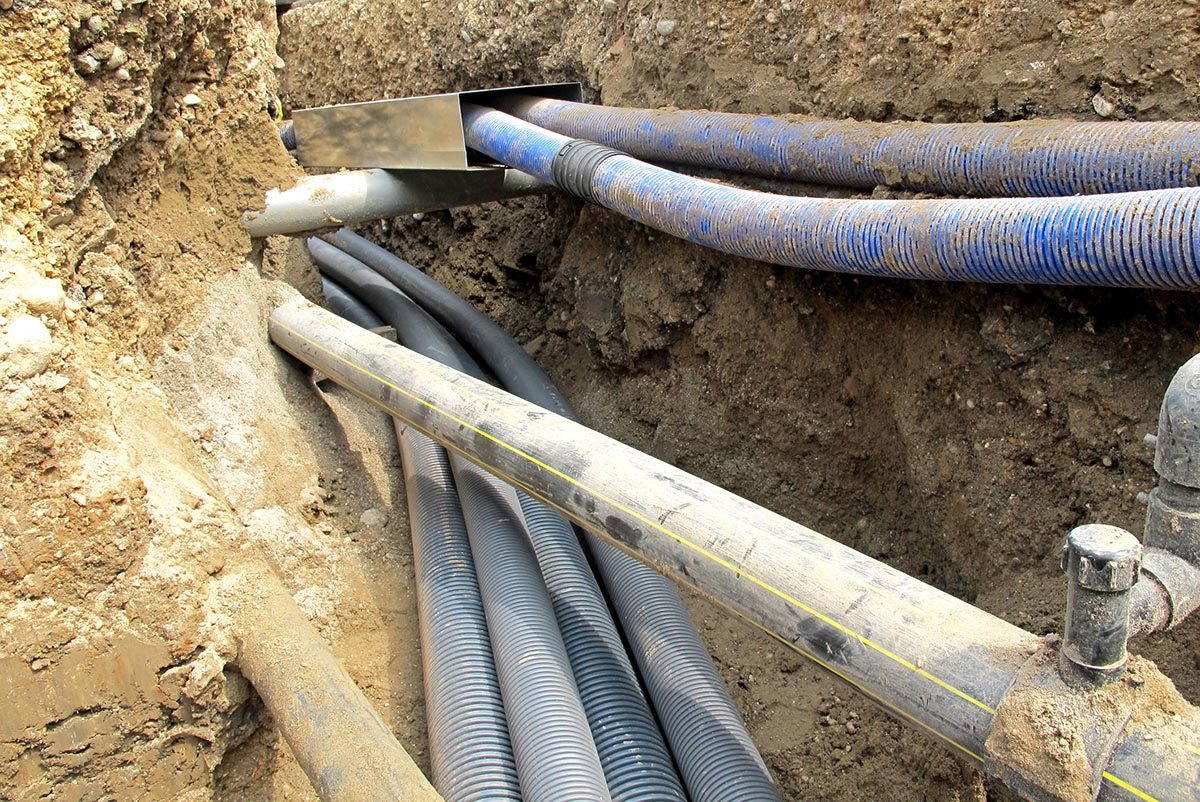Utility Networks (UN) – a division of the Energy and Utilities Alliance (EUA) looks at how to avoid construction delays due to utility connection issues.
Organising utility connections is often cited as the single most common cause of delay in construction projects. The reality is that they have a better chance of staying on schedule when architects, consultants, contractors and developers factor in detailed utility designs much earlier. Utilities are often undervalued and brought in too late to the party which can have major consequences for all.
There are three big issues – the network connection, location of infrastructure, and metering, with some developers assuming or omitting certain utilities information. Early advice from an experienced company with technical knowledge and project engineers on the ground can cut costs, and ensure the vision of the developer is realised.
Network connection
If there are buildings around a new site that are already connected to the utility network, it is logical to think that those utilities can be branched out to your new site. But those existing networks may already be working to capacity – and if they are, there will be cost implications for expanding them. These are expensive questions if they are not tackled early on.
Then we need to consider the anticipated utility demand of the new development. The provision of an Ordnance Survey plan with an outline of the development, at best can only be a subjective calculation as to the required loads. This approach does demonstrate some forward thinking in terms of utility infrastructure needs but in reality it is comparable to licking one’s finger to assess the direction of the wind; without specific details, such as the mix of domestic properties or the use of the industrial units, this approach is a guestimate.
Location of infrastructure
Firstly we have highways. From timing and location through to lane rentals, utility companies will know which roads to cross to ensure cost and time efficiency. Timing can be a factor here as well – there can sometimes be major difficulties trying to get permissions to work on roads at certain times of the year.
Consideration also needs to be given to the path and location of the utility infrastructure. Will it require easements or a wayleave? For example; electricity sub-stations require clear access for maintenance purposes, for which the Distribution Network Operator (DNO) will insist on this legal obligation being in place prior to making the supply and sub-station live. The industry is only too familiar with the frustration of developers when an easement is not in place in time, resulting in the properties having to be supplied by a generator.
Easements are now becoming more prevalent within the gas industry, where once it was assumed that wherever a gas pipe was buried in the ground that access to it was a forgone conclusion, this is no longer the case, and therefore Gas Distribution Networks (GDN’s) are much warier of the location of their asset and the access they will be given for future maintenance and emergencies.
This has not been the case for water mains and services; they are just not laid in private un-adopted land, but rather metered from the property boundary. This then moves the onus to the land owner to maintain those pipes downstream from the meter.
Metering
The biggest question here is where they should be positioned – particularly in multi-occupancy buildings or those with constrained meter locations – this can make a huge difference to connection costs and timescales.
The ideal location for a gas meter should be in a purpose built external cavity, surface mounted or multi box with suitable ventilation, on the front elevation or on a flank wall 2.0 meters from the front of the property. Also considered are specifically constructed rooms to the outside of a building or internal to the building but on an external wall for natural ventilation. Gas meters can still be located within a property providing it is well ventilated and on an external wall. Developers historically want to install gas meters in a semi-concealed ground box, but these are no longer suitable, mainly because they are not ideally suited to a smart meter installation.
Multiple occupancy dwellings and gas meters pose a different set of challenges, so early engagement with Utility Connection Providers (UCP’s) is crucial for those developments.
Water is fairly straight forward, most meters are housed in the boundary or stop-cock box. However there is a move to use what is known as a ‘ground breaker box’ which is located on a wall of the property that has a stop-cock and meter within.
As for the electricity industry it is more or less a given that meters and associated apparatus will be housed in a recessed cavity box, unless the dwelling is of a multiple occupancy where a suitable cupboard or dedicated room will need to used.
Engage with us early
The point at which it becomes viable for the Utility Connections Providers (UCP) to design the utility infrastructure is when planning permission has been granted. At this point the UCP’s will have knowledge of the loads and flows required for the development.
It is crucial that utility providers are engaged at this point as there is much to consider with respect to legislation, codes of practice and industry standards.
There are plenty of resources where information can be obtained; the DNO’s and the water industry all have their requirements for design available on their individual websites. For gas it is a little more difficult due to competencies and regulation, and the codes of practice have to be purchased from the Institute of Gas Engineers and Managers. That said, UCP’s are more than happy to help and guide developers to solve their problems. A list of these providers can be found on the EUA web site.
It is also important to ensure also that a Lloyds accredited company is engaged, it is your safeguard to know that they are competent.
Remember, it is never too early to plan but it can so easily be too late!
Utility Networks (UN)
Energy and Utilities Alliance (EUA)
Tel: +44 (0)1926 513777














